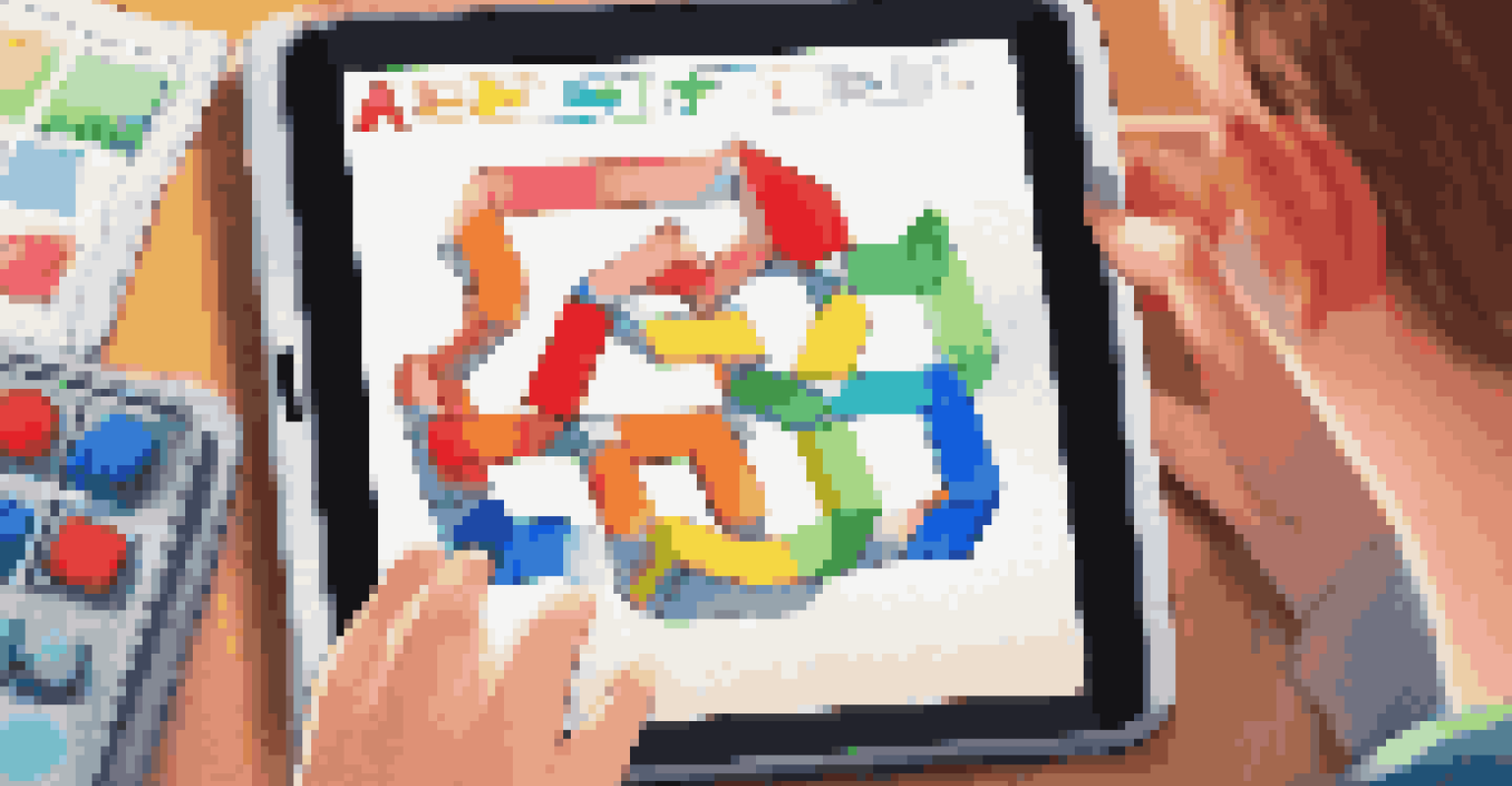The Influence of Game-Based Learning on Student Motivation Levels

Understanding Game-Based Learning and Its Importance
Game-based learning (GBL) integrates play into the educational process, making learning enjoyable and interactive. This approach encourages students to engage with content in a way that traditional methods often cannot. By transforming lessons into games, students can explore concepts more freely, fostering curiosity and a love for learning.
Games are the most elevated form of investigation.
Consider a classroom where math problems are solved through interactive games rather than worksheets. This shift not only makes learning more fun but also enables students to grasp complex concepts through practical application. As a result, learners often feel more motivated to participate and succeed.
Ultimately, GBL positions education as an adventure rather than a chore, capturing students' attention and prompting them to invest in their own learning journey.
The Psychology Behind Student Motivation
Understanding what drives student motivation is crucial for educators. Theories such as Self-Determination Theory suggest that autonomy, competence, and relatedness are key components in fostering motivation. Game-based learning taps into these elements by allowing students to make choices, experience success, and connect with peers.

For instance, when students play a game that rewards them for completing challenges, they not only feel a sense of achievement but also gain confidence in their abilities. This confidence can translate into increased willingness to tackle more difficult subjects or tasks, creating a positive feedback loop.
Game-Based Learning Boosts Engagement
Integrating games into education transforms lessons into interactive experiences, making learning more enjoyable and effective.
By aligning educational goals with these psychological principles, game-based learning can effectively enhance motivation levels among students, leading to a more engaged and proactive learning environment.
Benefits of Game-Based Learning on Engagement
Engagement is one of the most significant benefits of game-based learning. Traditional teaching methods can sometimes lead to disengagement or boredom, but games inject energy into lessons. When students are actively involved in their learning process, they are more likely to retain information and develop critical thinking skills.
Play is the highest form of research.
Imagine a history lesson transformed into a quest where students must solve puzzles related to historical events. This scenario not only makes learning enjoyable but also encourages collaboration, as students often work together to achieve common goals. Such teamwork enhances their overall learning experience.
Moreover, the immersive nature of games allows students to delve deeper into subjects, fostering a sense of curiosity that traditional methods may not evoke. Increased engagement can lead to improved academic performance and a more profound love for learning.
Fostering a Growth Mindset Through Game-Based Learning
Game-based learning can also help cultivate a growth mindset in students. A growth mindset is the belief that abilities and intelligence can be developed with effort and perseverance. When students face challenges in games, they learn to view mistakes as opportunities for growth rather than failures.
For example, in a game where students must retry levels to progress, they begin to understand the value of resilience. This perspective encourages them to approach academic challenges with a similar attitude, leading to greater perseverance in their studies.
Fosters Growth Mindset in Students
Game-based learning encourages students to view challenges as opportunities for growth, promoting resilience and perseverance.
By embedding the principles of a growth mindset into the learning experience, game-based learning can empower students to take ownership of their education and strive for continuous improvement.
Real-World Applications of Game-Based Learning
The applications of game-based learning extend far beyond the classroom. Many educational institutions and organizations are now incorporating games into their training programs. This approach not only makes learning more engaging but also prepares students for real-world scenarios by simulating practical situations.
For instance, medical students might use simulation games to practice surgeries in a risk-free environment. These experiences allow them to develop skills and confidence before entering the actual operating room. Such immersive learning experiences are invaluable in fields requiring hands-on practice.
As educators and industry leaders recognize the effectiveness of GBL, we can expect to see even more innovative applications in various sectors, further enhancing student motivation and outcomes.
Challenges in Implementing Game-Based Learning
While the benefits of game-based learning are numerous, implementing it effectively can pose challenges. One significant hurdle is ensuring that educational games align with curriculum objectives. If games are not thoughtfully integrated, they may distract from core learning goals rather than enhance them.
Additionally, not all educators may feel comfortable using technology or game mechanics in their teaching. Professional development and training can help bridge this gap, equipping teachers with the skills and confidence necessary to incorporate game-based learning into their classrooms.
Real-World Skills Through Simulations
Educational games provide practical, hands-on experiences that prepare students for real-world applications in various fields.
By addressing these challenges, educators can maximize the potential of game-based learning, ensuring that it serves as a powerful tool for motivating students and enhancing their educational experience.
The Future of Game-Based Learning in Education
Looking ahead, the future of game-based learning in education appears promising. As technology continues to advance, we can expect even more immersive and interactive learning experiences. Virtual reality (VR) and augmented reality (AR) are starting to play a role in education, offering students dynamic environments to explore.
Imagine students learning about marine biology by exploring a virtual underwater ecosystem. Such experiences can deepen understanding and foster a sense of wonder about the world, making learning more impactful. This progression could further enhance student motivation and engagement.

As educators and institutions embrace these innovations, game-based learning will likely become a staple in classrooms, transforming the way students learn and interact with content.